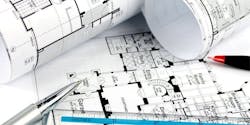A recent report from the Harvard Joint Center for Housing Studies said that by 2035, one in three U.S. households will be headed by someone 65 or older. Many of these people will want to stay at the homes where they currently reside.
CityLab reports that a few programs have emerged that will help people who want to age in place. Johns Hopkins University’s Community Aging in Place–Advancing Better Living for Elders (CAPABLE) helped elderly Baltimore residents stay in their homes, assigning them a nurse and occupational therapist for wellbeing purposes, and a handyman to make Universal Design adjustments. The program is being expanded to Michigan.
The 2016 Redefining Home: Home Today, Home Tomorrow was a contest where architects used $75,000 to redesign an existing house in Memphis and make it more accessible for elderly residents. A New York firm won the competition by widening hallways, remodeling the bathroom and kitchen, and creating an open, light-filled space in front of the house.
The Joint Center report indicated that only 1 percent of housing stock is equipped with Universal Design elements, and that a growth in the older population will increase the number of low-income adults.
For housing yet to be built, residential building codes that mandate features such as wider hallways and no-step entryways can aid future occupants. Currently, a few areas, such as Pima County, Arizona, and Bolingbrook, Illinois, require these standards.
